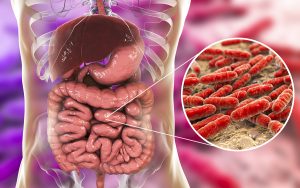A recent study showed that occasional and moderate drinkers have lower mortality rates. The study came from the Columbia University, New York and was done with a senior population in the US. (7,904 seniors born between 1931 and 1941). The researchers followed this population for 16 years, from 1998 to 2014. There were 5 categories of drinking.
5 drinking patterns
Lifetime abstainers: had less than 12 drinks in their lives.
Current abstainers: they drank in the past, but were abstainers during the present observation period.
Heavy drinkers: drinking 3 glasses or more per day or binging more than 5 drinks in a single day. For women heavy drinking was defined as having more than 2 drinks per day or binging more than 4 drinks in a single day.
Moderate drinkers: they drank 1 to 3 (men) or 1 to 2 (women) drinks per day 1 or more times per week.
Occasional drinkers: they drank less than 1 day per week (for instance once or twice per month) and drinking a maximum of 3 drinks for men and 2 drinks max for women.
Binge drinkers were incorporated into the heavy drinker category.
Findings
The key findings were that over 16 years occasional and moderate drinkers had a lower mortality than lifetime abstainers or current abstainers. Heavy drinkers had a higher mortality as well. The researchers depicted their data as survival curves in a graph. They also tabulated them as data.
A male moderate drinker had a 35% lower mortality, a male current abstainer had a 73% increased mortality, a male lifetime abstainer had a 19% increased mortality and a male heavy drinker had a 20% increased mortality. The researchers set the male occasional drinkers as the reference at 100%.
Women had the following results: a female moderate drinker had a 29% lower mortality, a female current abstainer had a 98% increased mortality, a female lifetime abstainer had a 71% increased mortality and a female heavy drinker had a 11% increased mortality. Again the female occasional drinkers were the reference set at 100%.
Comments about the limitations of the study
The researchers pointed out that the findings of the current abstainers were surprising. However, they were of the opinion that the volunteers in that group likely had health reasons why they quit drinking. If there were cardiac, pancreatic or liver problems (cirrhosis of the liver), these conditions may well have become the reason why they died earlier than the other groups.
They also pointed out that various confounding factors could interfere with the study. Such factors as mental health, body mass index (BMI) or socioeconomic status could interfere with the findings of the study. Further, the researchers found that smoking status in men showed less influence on mortality than it did in females.
Confounding factors
The authors of the study pointed out that it went on for 16 years with many assessments of the drinking status on an ongoing basis. Other studies were one-point assessments, which are not as reliable.
The authors were studying the effects of confounding factors, such as other diseases. They found that lung disease, depression, high blood pressure, stroke, heart disease, cancer and arthritis had their own effects on mortality figures. In addition they looked at the effects of daily activity difficulties, BMI, smoking status, education, age and race/ethnicity on mortality. When all of these confounding factors were normalized, occasional and moderate drinkers still had the lowest mortality.
Graph regarding percentage of survival as a function of time
One of the most convincing findings is the depiction of the data as a percentage of survival plotted as a function of time. This clearly shows that all the time over the entire 16 years the occasional and moderate drinkers had the longest survival times. It also shows clearly that the moderate drinkers lived longer than the occasional drinkers.
Discussion
We know from other studies that moderate alcohol consumption prevents fatty deposits in coronary arteries. Over the centuries pathologists found that the arteries of alcohol consuming individuals were entirely clear of fatty deposits, although they died of other diseases. However, in heavy drinkers the balance tips and cardiovascular disease is more prominent. The biggest effect of reducing mortality likely comes from a reduction in cardiovascular disease. However, alcohol can also cause various cancers. Because of this you will want to keep alcohol consumption in the lower ranges.
Conclusion
An important large study involving 7,904 seniors in the US that lasted 16 years has shown the following findings: Occasional and moderate drinkers had a lower mortality rate than lifetime abstainers or current abstainers. Heavy drinkers had a higher mortality rate as well. The researcher examined possible confounding factors, but after normalizing for these, the findings were still the same.
The French paradox answered
This study may explain the French paradox: the French eat cholesterol-rich foods. However, they live a long life without heart attacks. The difference to the US is probably that they consume red wine regularly. The study described here seems to indicate that occasional and moderate alcohol consumption prolongs life. It does not give anybody a ticket to overindulge, because “it is good for you”. The importance is the dosage: stay under the limit with your alcohol intake. Be an occasional consumer and don’t exceed the limit of moderate consumption. In this case you can raise a glass to your health!















